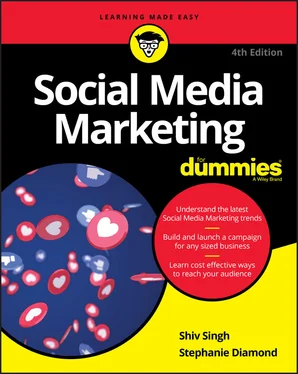
FIGURE 1-1:Facebook is just one example, albeit the largest, of the many media platforms.
Learning about the Roles People Play
To look at the framework of social media marketing, we need to look at the different roles played by those engaged in social media. They are as follows:
Marketers: They publish and share content online to achieve an organization’s marketing and business needs. Today’s marketer looks nothing like the marketers of the twentieth century. Customers now own the brand conversation. The opportunity to interrupt and annoy those customers has dwindled. Customers now meet businesses on their own terms. In the following section, we discuss the new role that marketers have to play.
Influencers: Several types of influencers contribute to the decisions customers make. They may be everyday people who influence the consumer as he makes a purchasing decision. Depending on the decision, the social influencers may be a wife (or husband), friends, peers at work, or even someone the consumer has never even met in real life. Simply put, the people who influence a brand affinity and purchasing decision are the social influencers. They may exert this influence directly by rating products and commenting or by publishing opinions and participating in conversations across the web. Anyone can be a social influencer, influencing someone else’s brand affinity and purchasing decisions, and you, the reader, are probably one, too, without realizing it. We discuss the specific types of influencers in the section “ Understanding the role of the influencer.”
Platforms: We used to believe that the social media platforms on which marketers, influencers, and consumers published content were neutral technologies without playing a role in whose content got promoted and shared the most. However, in recent years, the actions of the major social media platforms have shown that their leadership has an active role to play in what gets promoted, shared, and inversely censured on a social media marketing platform. If you’re a small company, their influence may not be noticeable but for larger companies who market and sell many products online, understanding how the platforms and their leaders think about content is important.
 It isn’t enough to market to the consumer anymore; as a marketer, you have to market to your potential customers’ social influencers as well so that they, in turn, influence either overtly or just by what they publish and share online. And that’s what social media marketing is about.
It isn’t enough to market to the consumer anymore; as a marketer, you have to market to your potential customers’ social influencers as well so that they, in turn, influence either overtly or just by what they publish and share online. And that’s what social media marketing is about.
Changing roles of the social media marketer
Anyone who has worked in online marketing for a while has watched amazing changes take place. Starting in 1994, one of this book’s authors, Stephanie, worked at AOL, watched that company and other online services help start a social media revolution that continues to change the world. At that time, the other author, Shiv, created his first website using HTML 1.0 and added the ability to comment at the end of each page.
Since then, a lot has changed, and today many marketers are looking for a specific set of rules to follow to be successful. We can assure you that there aren’t any, but there are some guidelines. Following are some of the actions that social media marketers must take if they want their company to compete successfully in the new social marketplace:
Become the top persuader.When you lead an SMM team, you need to understand that persuasion is your most important tool. You persuade your team that you can help its members achieve success, and you persuade your customer to buy your product. Throughout this book, we discuss the role that influence plays in social media and in the art of persuasion. Before you influence, you need to figure out the persuasive message that will sell. When you do that, you can unleash the groups that influence your customers.
Use a variety of distribution channels.The key mistake that some new social media marketers make is to focus solely on social media platforms to carry their message. This does half the job. Although it gets people’s attention, it doesn’t always get them to the sale. For example, imagine that you have just tweeted about a solution for stain removal. Unless you provide a link to your product and a place for discussion and reviews, you have a missed opportunity. Draw a map of all your channels (blog, website, Facebook page, newsletter, and so on), and use it whenever you plan a new campaign. You need a link to all your venues.
Reinvent your strategy to emphasize value.Value is a secret weapon in this economy. When you boil away all the other ingredients of a product sale, you uncover value. This is a tricky concept because value is in the eye of the beholder. Understanding what imparts that value should underlie your entire marketing strategy. Think about your current SMM campaign. Are you focusing on features and benefits or on how the product makes your customer feel? For example, some companies focus on making people feel smart and sexy when they buy a certain model car. By the same token, others may focus on models that emphasize safety and responsibility. If you understand the value, you can establish a bond with your buyer.
Market to inspire.The globalization of our world via the Internet has given us a window into the lives of others. It’s hard to ignore the poverty and disease that plague much of the world’s population. Many companies are seizing the opportunity to use their businesses to help make an impact. SMM encourages awareness of the connection we share with others. Think about how your business can participate.In fact, in the last few years alone, purpose driven marketing, which is about defining why you do what you do, has become one of the most important ways to engage customers. Dove’s #speakbeautiful movement Twitter campaign, which encouraged women to speak positively about themselves, is a perfect example of this type of marketing as it flowed naturally from Dove’s broader purpose of improving the self-esteem and confidence of women. It wasn’t just about selling a product but demonstrating that the brand has a more meaningful role to play in people’s lives.
Create and curate content.Offering engaging content is a big part of any SMM campaign. You need an editorial calendar that lays out your topics, creation tools, and deadlines. You also need to focus on curating content already published on the web. Becoming a trusted source of information is key to getting your customers to visit often. It’s important to remember that your customers are leading highly engaged and entertaining lives in the social media world. Your content can’t just be about your product. It needs to be valuable to them and their lives.
Know when to resist the next shiny object.As you well know, new web tools pop up daily. The best way to avoid being distracted is to write down your objectives. The last thing you want to say to yourself is, “Everyone is using such and such, so we should use it.” Place your objectives in a prominent place and refer to them often. If they change, revise the document. But whatever you do, don’t try to do something on every social platform — you’ll quickly discover that you don’t have the tools, training, and — most critically — the resources to support all the tools.
Be prepared to be wrong.This is a tough one. In your role as marketer, you want to lead your company to successive victories. SMM is not a sure thing. You need to be prepared to experiment and change course using the feedback that you get from customers. You may start with a small idea and develop it into a full-blown campaign. It’s unlikely that you can start out with a very expensive big effort and not have to correct along the way. When management and staff start out with the notion that they are testing and experimenting, changes in direction won’t seem as shocking. This cuts down on wear and tear of the psyche for everyone. It also limits the risks to your core marketing efforts while you learn this space.
Читать дальше


 It isn’t enough to market to the consumer anymore; as a marketer, you have to market to your potential customers’ social influencers as well so that they, in turn, influence either overtly or just by what they publish and share online. And that’s what social media marketing is about.
It isn’t enough to market to the consumer anymore; as a marketer, you have to market to your potential customers’ social influencers as well so that they, in turn, influence either overtly or just by what they publish and share online. And that’s what social media marketing is about.










